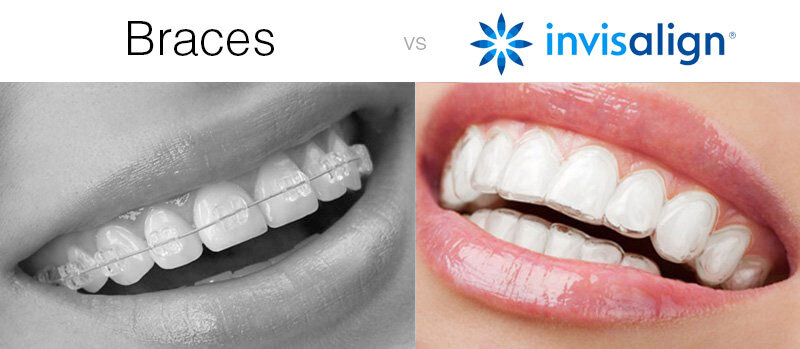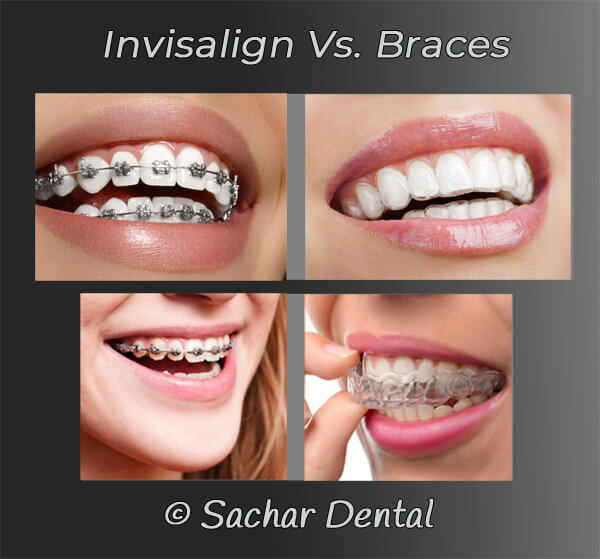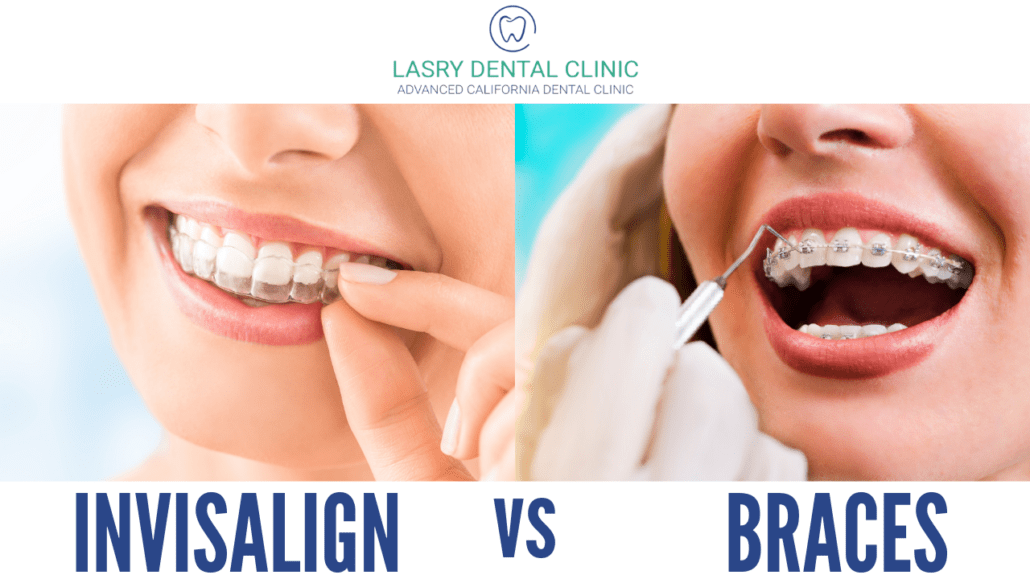Discover the Conveniences of Invisalign for a Perfect Smile Makeover
Discover the Conveniences of Invisalign for a Perfect Smile Makeover
Blog Article
Invisalign vs. Conventional Braces: Which Choice Is Right for You?
When considering orthodontic therapy, the choice between Invisalign and traditional dental braces provides several important elements that warrant cautious examination. Invisalign supplies a very discreet choice with detachable aligners, while traditional dental braces offer an extra noticeable yet reliable option for extreme misalignment.
Introduction of Therapy Choices

On the other hand, standard dental braces include metal braces and wires that are adhered to the teeth. This approach applies continuous pressure in time to achieve placement. While effective for complicated orthodontic problems, standard dental braces call for normal sees for adjustments and can pose obstacles in preserving oral health due to the trouble of cleaning around wires and braces.
Both choices have their advantages, and the selection commonly depends upon certain dental conditions, lifestyle choices, and person compliance. Inevitably, speaking with an orthodontic expert is crucial for establishing the most suitable therapy plan tailored to private demands. Recognizing the nuances of each choice can considerably affect the total success of orthodontic therapy.
Visual Factors To Consider
A substantial factor affecting the selection in between Invisalign and traditional braces is the visual appeal each therapy supplies. Invisalign aligners are crafted from clear plastic, making them practically unseen when used. This discreet appearance is especially attracting grownups and young adults who may feel uncomfortable concerning their orthodontic therapy. The ability to keep an all-natural smile throughout the positioning process can considerably improve the patient's self-confidence in professional and social settings.
On the other hand, conventional dental braces consist of metal brackets and cords, which can be a lot more obvious. While improvements in orthodontic modern technology have resulted in the development of smaller braces and tinted elastics, standard dental braces still keep a more noticeable account. For some individuals, the visibility of braces might discourage them from seeking essential therapy.
Eventually, the choice between Invisalign and conventional braces may rest on individual choices relating to appearances. Patients who focus on discernment typically favor Invisalign, while those that are much less concerned regarding presence may choose for standard dental braces. Comprehending the visual effects of each option is critical for making a notified decision that lines up with one's way of life and choices.
Comfort and Convenience

In terms of comfort, Invisalign aligners are removable, enabling clients to appreciate their preferred foods without restriction and maintain optimum dental hygiene. Cleaning and flossing are simplified, as the aligners can be secured throughout these routines, whereas standard dental braces call for careful navigating around brackets and wires.
Furthermore, Invisalign's dynamic system permits less orthodontic check outs. Clients usually receive numerous sets of aligners simultaneously, which can simplify the treatment process and decrease time spent in the orthodontist's chair. In contrast, standard braces require routine changes, making them less hassle-free for those with active schedules. Invisalign. On the whole, the convenience and convenience of Invisalign make it an attractive choice for lots of individuals seeking orthodontic treatment.
Therapy Period and Efficiency
While both Invisalign and traditional dental braces work in remedying oral imbalances, the period of treatment can vary considerably in between the two choices. Usually, Invisalign therapy can take anywhere from 12 to 18 months, depending upon the intricacy of the case. The clear aligners function by gradually moving teeth into their desired placements, and routine follow-ups with an orthodontist assistance make certain progress remains on track.
In comparison, conventional dental braces typically call for a longer commitment, generally varying from 18 months to three years. This results redirected here from their set nature and the use of cables and braces, which can be extra check out here reliable for intricate instances and severe misalignments (Invisalign). The therapy efficiency of traditional dental braces is well-documented, as they allow for accurate changes and better control over tooth activity
Ultimately, the option between Invisalign and typical dental braces might rest on both the anticipated therapy duration and the certain oral issues available. Consulting with an orthodontist is crucial, as they can give customized referrals based on private needs, guaranteeing the selected approach straightens with wanted timeframes and results.
Expense Comparison and Insurance Coverage Choices
Price plays a significant duty in the decision-making process for people thinking about orthodontic treatment, whether selecting Invisalign or traditional dental braces. Generally, the price of Invisalign arrays from $3,000 to $8,000, while typical dental braces normally cost in between $2,000 and $6,000. Aspects affecting these prices consist of the intricacy of the instance, the period of treatment, and geographical place.
Insurance coverage can considerably influence out-of-pocket expenses. Several dental insurance strategies supply partial insurance coverage for orthodontic treatments, but the specifics can vary widely. It is vital for individuals to review their insurance plan to figure out the extent of insurance coverage for either option. Normally, typical dental braces might be extra regularly covered by insurance policy strategies contrasted to Invisalign, which some insurance firms categorize as an aesthetic treatment.
Furthermore, several orthodontic practices supply flexible layaway plan, making both treatment alternatives extra accessible. Clients ought to ask about prospective financing alternatives and price cuts for browse around here upfront settlements. Assessing the total expense, consisting of insurance coverage advantages and repayment plans, is essential for making an educated decision that lines up with both visual choices and spending plan factors to consider.

Verdict
In recap, the choice in between Invisalign and conventional braces depends upon several factors, including aesthetic choices, convenience, treatment period, and price. Invisalign offers a discreet, detachable alternative that assists in dental hygiene and nutritional versatility, while standard dental braces might be extra suitable for complex dental concerns and commonly come at a lower rate point. Ultimately, appointment with an orthodontist is vital to examine specific conditions and figure out the most appropriate treatment alternative for attaining ideal dental placement.
When considering orthodontic therapy, the option between Invisalign and conventional dental braces presents a number of crucial aspects that merit careful assessment.Comparing Invisalign and traditional dental braces discloses unique therapy choices for orthodontic adjustment.While both Invisalign and standard dental braces are efficient in dealing with dental imbalances, the duration of treatment can vary substantially in between the 2 options.Expense plays a significant duty in the decision-making process for people considering orthodontic therapy, whether choosing for Invisalign or standard dental braces.In recap, the option in between Invisalign and typical braces hinges on several factors, consisting of visual preferences, convenience, treatment period, and cost.
Report this page